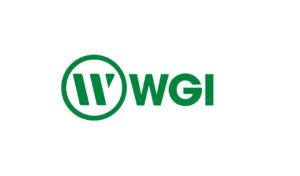Denver Light Rail turns 15
Written by jroodThis month, Denver's Regional Transportation District is marking the 15th anniversary of light rail opening in the metro area. Since RTD opened the 5.3-mile Central Light Rail Line October 7,1994, RTD's 35-mile light rail system has carried nearly 150 million passenger trips. The light rail network carries an average of about 60,000 passenger trips every weekday, ahead of ridership projections. All four of RTD's light rail lines were built on time and on budget, and each exceeded ridership projections.
RTD Chairman Lee Kemp said,
"The 15th Anniversary of light rail in the metro area is yet another milestone
among the many RTD has surpassed, with many more to come. The importance of
providing rapid transit service, including the full FasTracks system, to meet
the current and future needs of the region cannot be overstated.
In an effort to help
address traffic congestion and growing pains, in 1994 the RTD succeeded in
opening the Denver metro region’s first light rail line. The 5.3-mile Central
Corridor Line cost $116.5 million and was fully funded by RTD. Shortly after
opening, ridership surpassed 17,000 daily boardings, 3,000 more than
anticipated. The Central Corridor allowed RTD to remove 400 bus trips per day
from downtown city streets. The new line not only demonstrated the success of
light rail in the metro area but also provided the backbone of the planned
regional light rail system.
RTD added the 8.7-mile
Southwest line in July 2000, connecting with the cities of Sheridan, Englewood
and Littleton. The two-mile Central Platte Valley/C-Line was added in April
2002, providing service to the Auraria Campus, Invesco Field at Mile High, the
Pepsi Center and Denver Union Station, just two blocks from Coors Field. The
19-mile Southeast Line down I-25 from Broadway with a spur on I-225 to Parker
Road, part of the T-REX Project, opened in November 2006.
The region’s recognition of
the importance that passenger rail will play in helping to address mobility
needs, traffic concerns, smart growth and "green" transit options in the
rapidly growing metro area led to RTD developing the comprehensive FasTracks rapid
transit expansion program. Overwhelmingly approved by voters in 2004, FasTracks
is RTD’s voter-approved transit program to expand rail and bus service
throughout the RTD service area. FasTracks will build 122 miles of commuter
rail and light rail, 18 miles of bus rapid transit service, add 21,000 new
parking spaces, redevelop Denver Union Station and redirect bus service to
better connect the eight-county District. The FasTracks investment initiative
is projected to create more than 10,000 jobs during the height of construction
`and will pump billions of dollars into the regional economy.
The West Corridor Light
Rail Line, the first FasTracks line, is well under construction, with RTD
having received a $308-million full funding grant agreement in January from the
Federal Transit Administration for the $634.7-million line. Opening in 2013,
the West Corridor adds 12 stations and 12.1 miles of light rail running from
DUS through Denver, Lakewood, and Golden, ending at the Jefferson County
Government Center.
RTD just issued the request
for proposals for the Eagle P3 project, the public-private partnership venture
that will complete several FasTracks projects through one collective contract.
As planned, the RFP was delivered to three pre-qualified teams on September 30.
The $2.3-billion Eagle P3
Project will design, build, finance, operate and maintain the commuter rail
lines of the East Corridor from Denver Union Station to Denver International
Airport, the Gold Line to Arvada and Wheat Ridge, a short segment of the
Northwest Rail Corridor to Westminster and the commuter rail maintenance
facility. In 2008, RTD short-listed three teams to compete for the P3 contract.
Proposals from the bidding teams are due in spring 2010, and RTD expects to
make a decision on selecting a final team in June 2010.
In addition, the FasTracks
program is moving forward with the I-225 Corridor, the North Metro Corridor,
Northwest Rail, the US 36 Corridor, the extensions to the Southwest and
Southeast Lines, and the Denver Union Station redevelopment.





